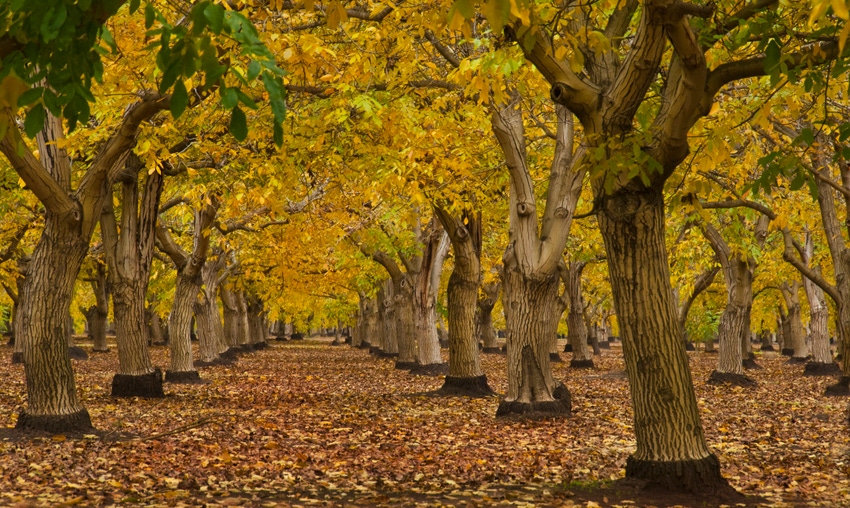
Deep, uniform, well-drained soils are ideal for English walnut production in California, yet increased demand for the nut has pushed newer plantings into areas with less than ideal ground.
The effects of the move into heavier soils, including former rice ground in Northern California, may become evident following this January’s storms which dropped record amounts of precipitation on many acres of walnut trees and other crops. Statewide, some walnut orchards are underwater.
“Stagnant water and warm temperatures are detrimental to all (walnut) varieties, even the most tolerant,” says David Doll, University of California Cooperative Extension (UCCE) pomology farm advisor, Merced County.
He adds, “The closer to bloom walnut trees are then the more sensitive the trees are to root damage.” Cold, moving water in an orchard is less of a concern for walnut trees.
Janine Hasey, UCCE farm advisor in Sutter, Yuba, and Colusa counties, says warmer temperatures, plus the lack of oxygen in standing water, can initiate stress and eventual cause decay in walnut tree roots. If the water fails to quickly percolate into the soil, she warns about more opportunity for infection.
A primary concern for trees sitting in water for extended periods is Phytophthora, a fungus which can cause root and crown rot. The pathogen travels in surface water and is attracted to a chemical released by stressed walnut tree roots.
Doll says the pathogen lives in saturated soils, noting that periods of rainfall or standing water for more than 24 hours can provide enough moisture to cause Phytophthora infection. Infected trees can decline in vigor and production within several years.
Roots of younger and older walnut trees are affected by being immersed in standing water over long periods of time. The fine, active roots of mature walnut trees are in the top three feet of the soil, says Hasey, and water saturation with the loss of oxygen can stress trees.
Younger trees with a smaller root structure which rely on nutrient uptake are equally vulnerable to stress caused by soil saturation. Planting trees on berms can help trees avoid standing water-related root issues.
Hasey discussed Sacramento Valley flood events in 1986 and 1997 where floodwater covered thousands of acres of walnut and prune trees for weeks, resulting in severe outbreaks of Phytophthora.
“When the water receded the infections started showing up,” the farm advisor said.
Hasey has heard recently from several growers with walnut orchards in standing water. They told her that downed trees, so far, have not been an issue, and large, unpruned walnut trees were okay after the recent storms.
Hasey says the longevity of water saturation and temperatures will determine the extent of the damage.
While growers cannot change the weather, they can lessen the potential effects of standing water on walnut trees.
For growers with trees in heavier soils with standing water for longer than a week, Doll encourages draining or pumping water away from low places, despite the expense. If growers expect long-term problems with drainage or flooding in walnut orchards, he suggests planting a cover crop.
Doll says a cover crop can take up as much as .06 to .08 inch of water per day, plus enhance soil water infiltration. A cover crop can also reduce sediment run off and reduce soil compaction.
“I would consider a cover crop on any block that is prone to flooding,” Doll concluded.
About the Author(s)
You May Also Like




